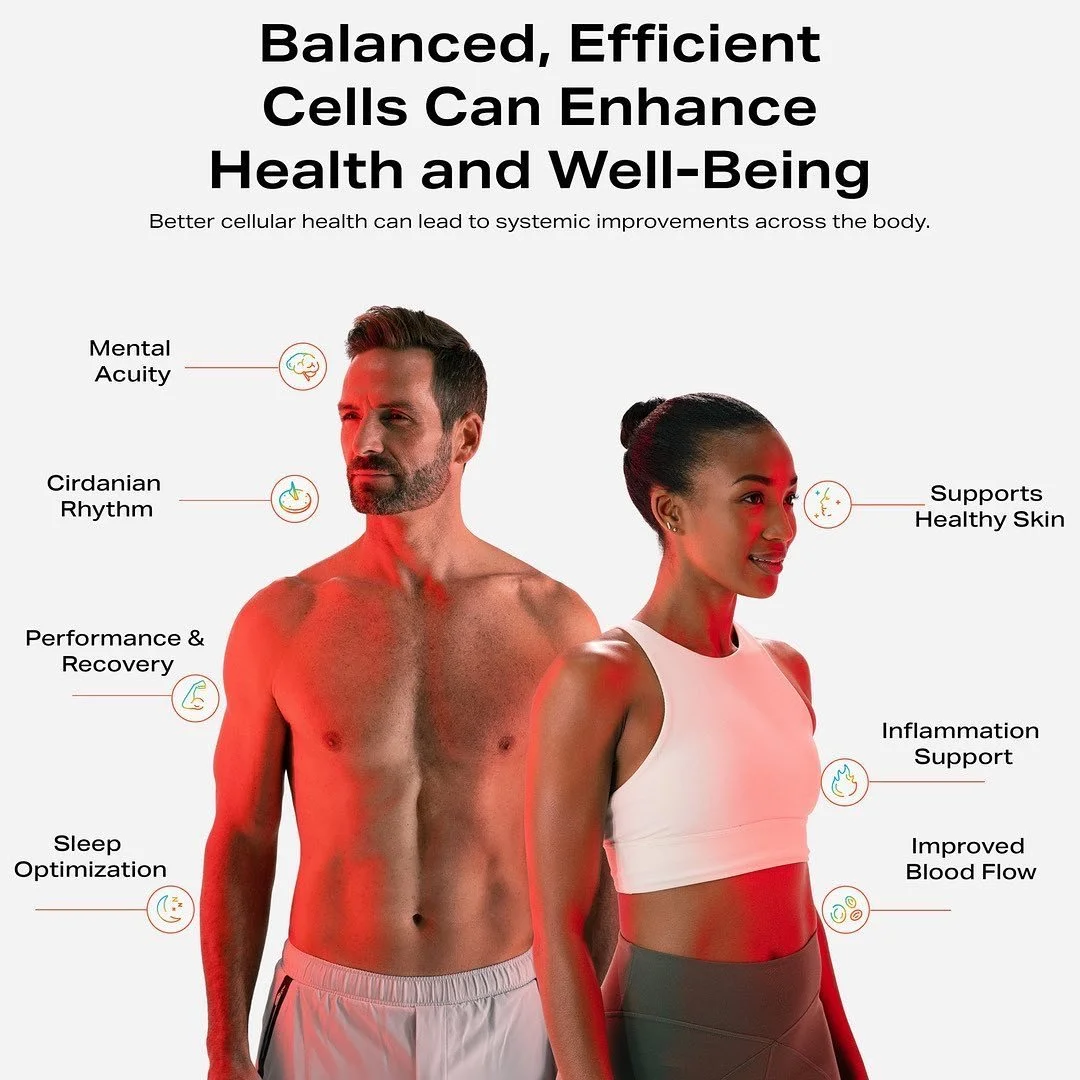What is Red Light Therapy? How Can it Help in Weight Loss?
/What is Red Light Therapy?
Red light therapy is an every-day term for the science of photobiomodulation.
It has been proven effective for a wide range of healing and rejuvenating uses including anti-aging, hair loss prevention & regrowth, skin conditions, wound care, pain relief, weight loss and much more. It is a 100% natural therapy with zero side effects.
Western doctors and researchers often call red light therapy by other names such as:
- LLLT (low level laser or low level light therapy)
- LILT (low intensity light therapy)
- photobiostimulation
- biostimulation (BIOS)
- photobiomodulation
- photonic stimulation
- photorejuvenation
- and others
How does red light therapy for weight loss work ?
Red light therapy works on a very simple mechanism which we will explain under two main points namely, bioenergetics and blood flow.
Bioenergetics – Red light therapy simply stimulates the mitochondria in the fat cell. Mitochondria, also known as the powerhouse of the cell, when stimulated it increases the glucose oxidation. This happens due to the fact that red light’s wavelength is between 600nm and 1000nm which stimulate a key copper enzyme in our cells. Consequently, more cellular energy is produced, and more glucose is burnt efficiently. This leads to less stress and healthier cells. The increase in metabolic rate ultimately leads to fat loss.
Blood flow- In addition, red light therapy is known to improve the blood flow in the area where it falls. This makes the cells produce a large amount of energy and improvement of blood flow. Improved blood flow leads to providing essential nutrients to the body making it healthy.
The red light used is modulated and works by draining and shrinking the fat cells. Further, it also adds new collagen and elastin which tightens and tones the skin leaving it looking young and beautiful.
Why Collagen is so Important for Enhanced Health
Collagen is a long-chain amino acid and the most abundant protein in the body. It’s responsible for giving skin elasticity, hair its strength, and connective tissue its ability to hold everything in place. In fact, the collagen protein makes up 30% of the total protein in the body, and 70% of the protein in the skin![12]
While collagen is beneficial to the entire body, it's most noticeably beneficial to the skin. This is because as a person ages, the epidermis (outer layer of skin) becomes thinner and loses elasticity through a process called elastosis. As this happens, a person tends to show more signs of aging and acquires more wrinkles.
But don’t fear. Red light therapy restores healthy cellular function, stimulating the production of collagen—which is why so many people have reported about the rejuvenating benefits of light therapy![1]
References:
[1] Ferraresi C, Hamblin M, and Parizotto N. “Low-level laser (light) therapy (LLLT) on muscle tissue: performance, fatigue and repair benefited by the power of light.”Photonics Lasers Med. 2012 November 1; 1(4): 267–286. doi:10.1515/plm-2012-0032.
[2] Al Rashoud AS, Abboud RJ, Wang W, Wigderowitz C. “Efficacy of low-level laser therapy applied at acupuncture points in knee osteoarthritis: a randomised double-blind comparative trial.” Physiotherapy. 2014 Sep;100(3):242-8.
[3] Emília de Abreu Chaves M, Rodrigues de Araújo A, Piancastelli ACC, and Pinotti M. “Effects of low-power light therapy on wound healing: LASER x LED.” An Bras Dermatol. 2014 Jul-Aug; 89(4): 616–623.
[4] Mitchell UH, Mack GL. “Low-level laser treatment with near-infrared light increases venous nitric oxide levels acutely: a single-blind, randomized clinical trial of efficacy.”Am J Phys Med Rehabil. 2013 Feb;92(2):151-6.
[5] Michael R. Hamblin. Mechanisms and applications of the anti-inflammatory effects of photobiomodulation. AIMS Biophys. 2017; 4(3): 337–361.
[6] Raven, P. H.; Johnson, G. B.; Mason, K. A.; Losos, J. B.; Singer, S. R. How cells harvest energy. 2014 In Biology 10th ed. AP ed. pp. 122-146. New York, NY: McGraw-Hill.
[7] Reece, J. B.; Urry, L. A.; Cain, M. L.; Wasserman, S. A.; Minorsky, P. V; Jackson, R. B. Cellular respiration and fermentation. In Campbell Biology. 2011 10th ed. pp. 162-184. San Francisco, CA: Pearson.
[8] Yoshikawa, Shinya Shimada, Atsuhiro; Shinzawa-Itoh, Kyoko. 2015 Chapter 4 Respiratory Conservation of Energy with Dioxygen: Cytochrome c Oxidase. In Peter M.H. Kroneck and Martha E. Sosa Torres. Sustaining Life on Planet Earth: Metalloenzymes Mastering Dioxygen and Other Chewy Gases. Metal Ions in Life Sciences 15. Springer. pp. 89–130.
[9] Huang, Ying-Ying; Chen, Aaron C.-H.; Carroll, James D.; Hamblin, Michael R. Biphasic dose response in low level light therapy. 2009 Nonlinearity in Biology, Toxicology, and Medicine.
[10] Baroni BM, Rodrigues R, Freire BB, Franke Rde A, Geremia JM, Vaz MA. Effect of low-level laser therapy on muscle adaptation to knee extensor eccentric training. Eur J Appl Physiol. 2015 Mar;115(3):639-47.
[11] Iurshin VV, Sergienko NF, Illarionov VE. [Etiopathogenetic basis for using magnetolaser therapy in the complex treatment of male infertility]. Urologiia. 2003 Mar-Apr;(2):23-5.
[12] Di Lullo, Gloria A.; Sweeney, Shawn M.; Körkkö, Jarmo; Ala-Kokko, Leena & San Antonio, James D. (2002). Mapping the Ligand-binding Sites and Disease-associated Mutations on the Most Abundant Protein in the Human, Type I Collage.. J. Biol. Chem. 277 (6): 4223–4231.











